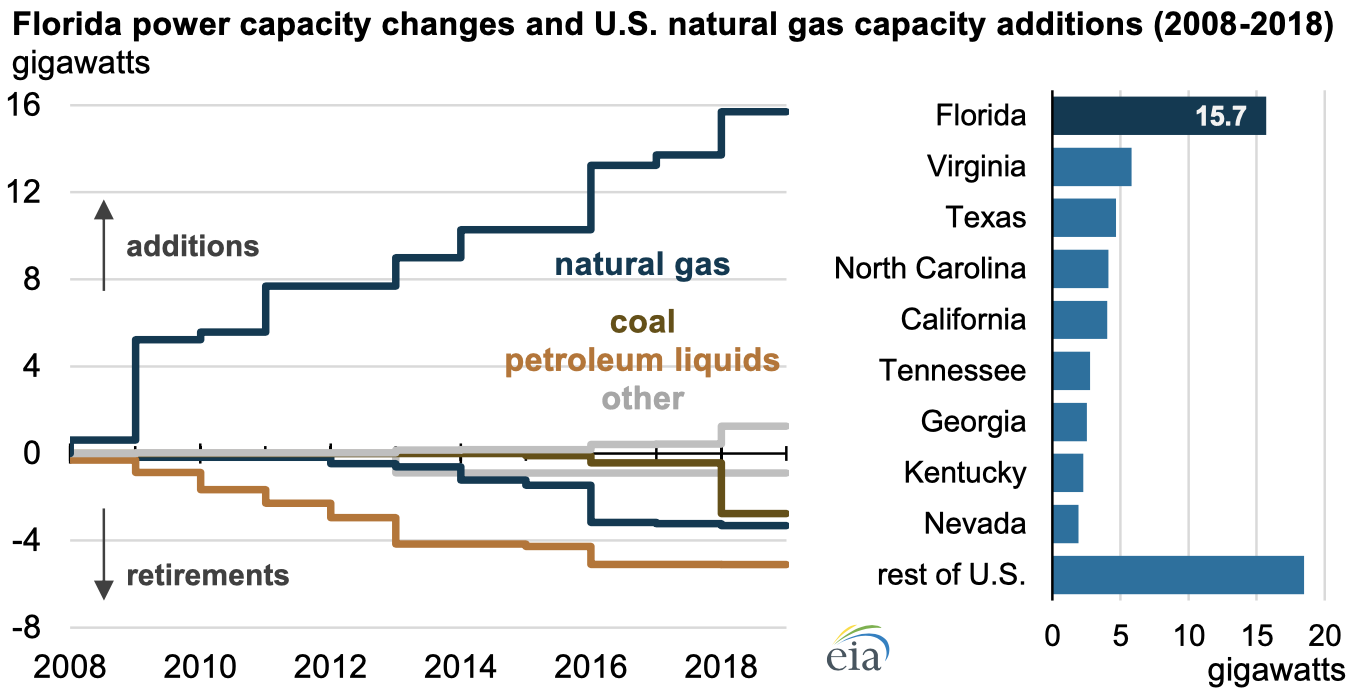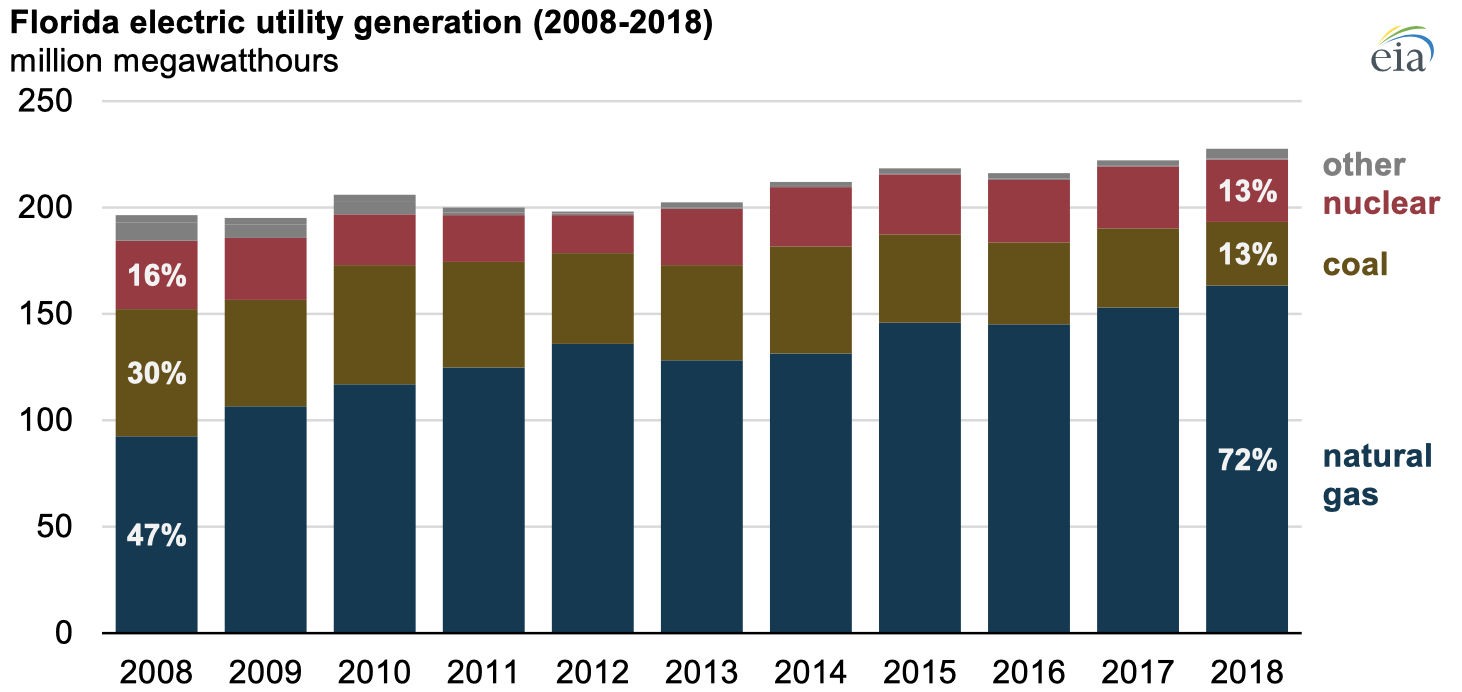Florida added nearly 16 gigawatts (GW) of utility-scale natural gas-fired electric generation between 2008 and 2018, about one-quarter (24%) of all U.S. natural gas installations during this time and the most of any state. During the same period, electric utility net generation in Florida grew about 15%, increasing natural gas’s share of the in-state generation fuel mix from nearly half (47%) to three-fourths (72%) of the total. EIA expects natural gas-fired generation capacity to continue to grow, displacing more emissions-intensive and less cost-competitive generation fuel sources such as coal and petroleum liquids.

Florida was the third-largest state for electricity retail sales during 2017, and growth in its electricity sector has been among the fastest in the United States since 2007. Between 2008 and 2018, overall net generation in Florida increased by about 15% to reach 225,000 gigawatthours (GWh).

Natural gas-fired electric utility net generation grew from 92,600 GWh in 2008 to 163,300 GWh in 2018, a 76% increase. During this time, retirements of electric generators powered by petroleum liquids or coal led to net generation decreases of 94% and 50%, respectively.
Additions to natural gas pipeline capacity have kept pace with new natural gas-fired electricity generation in Florida. According to EIA’s Natural Gas Pipeline State-to-State Capacity database, natural gas pipeline delivery capacity to Florida increased from 4.1 billion cubic feet per day (Bcf/d) in 2008 to 6.2 Bcf/d in 2018, up 50%. Most recently, in 2017, the 515-mile, 0.81 Bcf/d Sabal Trail pipeline entered into service.
The pipeline delivers natural gas to power plants owned by Florida Power and Light (FP&L) and Duke Energy of Florida. Construction is underway on Phase II of the Sabal Trail to deliver an additional 0.17 Bcf/d of natural gas to Florida in 2020. Other projects are planned to serve Florida, including Phase III of the Sabal Trail pipeline (0.08 Bcf/d) and an expansion of the Gulfstream Natural Gas System (0.08 Bcf/d), which will allow deliveries to the converted Big Bend Power Plant in Tampa, Florida.
According to EIA’s Monthly Update to Annual Electric Generator Report, through the first quarter of 2019, 1.8 GW of natural gas-fired electric generator capacity came online in Florida, mainly from FP&L’s 1.7 GW Okeechobee Clean Energy Center.
Two additional projects totaling more than 0.9 GW of nameplate capacity are scheduled to enter into service by 2021, including the Big Bend Power Station that will convert one of its coal-fired electric generator units to run exclusively on natural gas. The project will account for 84% of the increase of Florida natural gas generation capacity by 2021. Florida’s natural gas generation capacity will increase further when the natural gas unit switches from simple to combined-cycle operations in 2023.
Principal contributor: Steve Hanson








